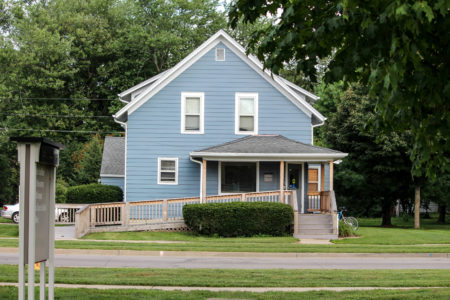By Megan Tcheng
tchengme@grinnell.edu
On any given night, Grinnell College’s Campus Safety officers can be seen making their evening rounds across campus. Donning new red, polo uniforms, the College’s safety force tends to fade into the background of campus life.
In the past year, however, the Department of Campus Safety has taken on a series of extensive changes, all aimed to develop and improve the treatment of safety at Grinnell.
Perhaps the most obvious change to the department is its new name. Previously referred to as the Office of Safety and Security, Campus Safety introduced their newly simplified title at the start of the school year. Community Advisor Mentor (CAM) John Gallagher ’17 reflected on the significance of the change.
“It may seem like a small name change, but, at the same time, I think Campus Safety serves a very different purpose here on campus than it does at a lot of [other colleges]. Many larger schools have their own police departments, which are responsible for bigger issues of security. Here, though, we need to focus on primarily on safety,” Gallagher said.
Altogether, Campus Safety’s plans for improvement reflect a desire to strengthen their presence on campus and offer more dependable resources to the community.
Gallagher reflected on his preexisting relationship with Campus Safety as a residential life CAM.
“[Security’s] goal is to uphold the safety of the community, which is in line with what a [Community Advisor] is supposed to do,” Gallagher said. “For CAs and CAMs, they are the next line in the process of getting students safe. I call them whenever there is a problem that feels bigger than what I personally can take on.”
Andrea Conner, the Vice President of Student Affairs, shared a similar perspective on the impact Campus Safety makes at the College.
“[Campus Safety’s] most important role is to do what they can to keep our students safe. Sometimes that means responding to situations that directly relate to our students, and sometimes that means trying to prevent criminal activities in individuals who are not a part of our campus community,” Conner said.

Housed as always at 1432 East Street, Campus Safety saw many changes this year, including to its name.
The majority of the department’s recent developments focus on improving Campus Safety’s preexisting role on campus. Such changes are a direct result of the security review process undergone by the College last October. Conducted by Margolis Healy, an external consulting firm, the comprehensive review identified a range of potential departmental improvements.
“While the goal of [Campus Safety] has not changed, the College is still investing a lot of time and resources into improving the department,” Conner said. “[Campus Safety] is an important part of the infrastructure of the institution and it needs attention. We feel really thrilled to be able put to this work in and improve the department.”
Current plans to strengthen the role of Campus Safety within the College community include the addition of new staff positions, updated training for security officers and technology updates to modernize the department.
Specifically, in the past year, Campus Safety has hired three new safety officers, with plans to add two more security officer positions. By increasing the security staff from six to 11 working officers, the department will be able to ensure that three safety officers are on campus at any given time, with at least two on call and one serving as a dispatcher.
“These staffing changes will allow for more coverage and a quicker response times. All community members will also experience a more consistent experience when they talk to a dispatcher,” Conner said. “Even so, we’re just catching up to what is appropriate for a modern campus safety program. It’s above where we’ve been, but there’s still a lot of room for growth.”

























































